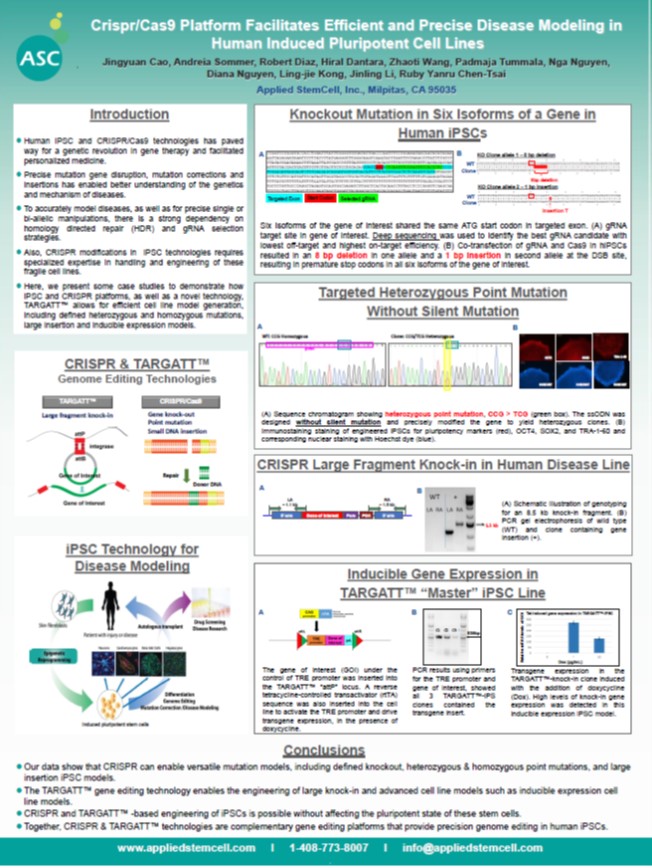Newsletter
CRISPR/CAS9 PLATFORM FACILITATES EFFICIENT AND PRECISE DISEASE MODELING

IN HUMAN INDUCED PLURIPOTENT CELL LINES
Jingyuan Cao *, Andreia Sommer, Robert Diaz, Hiral Dantara, Zhaoti Wang, Padmaja Tummala, Nga Nguyen, Diana Nguyen, Ling-jie Kong, Jinling Li, Ruby Yanru Chen-Tsai
Applied StemCell, Milpitas, CA 95035
The advent of hiPSC (Human Induced Pluripotent Stem Cells) and CRISPR/Cas9 (Clustered Regularly Interspaced Short Palindromic Repeats/ Associated Nuclease Protein-9) technologies has been heralded as a genetic revolution for gene therapy and regenerative medicine. Researchers are exploring the genetics and mechanisms of diseases by introducing mutations or correcting existing mutations in patient-derived iPSCs by using CRISPR/Cas9 techniques for a new era in personalized medicine. While CRISPR/Cas9 techniques has been widely and rapidly adapted for gene manipulation in various organisms in just a few years since its inception, the genome editing in hiPSCs has been slower to develop given the sensitive nature of these cells and the unique skills required to handle them. Furthermore, accurate disease modeling requires more dependency on homology directed repair (HDR) of the CRISPR/Cas9 nuclease system as well as precise single or bi-allelic manipulations. Various parameters affect the outcome of CRISPR-editing in iPSCs such as gRNA design, transfection of CRISPR elements, cell clone selection, etc. Here, we present some case studies to demonstrate how optimization of both iPSC and CRISPR/Cas9 protocol allows for efficient mutation models, including defined heterozygous and homozygous mutations, large fragment knock-in and conditional/ inducible expression models.

